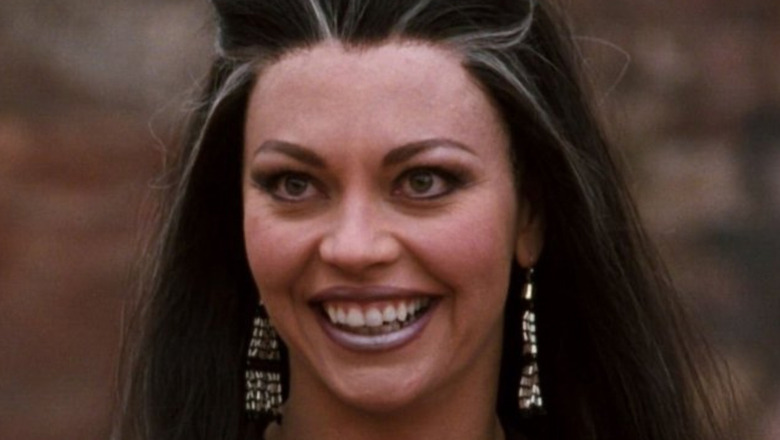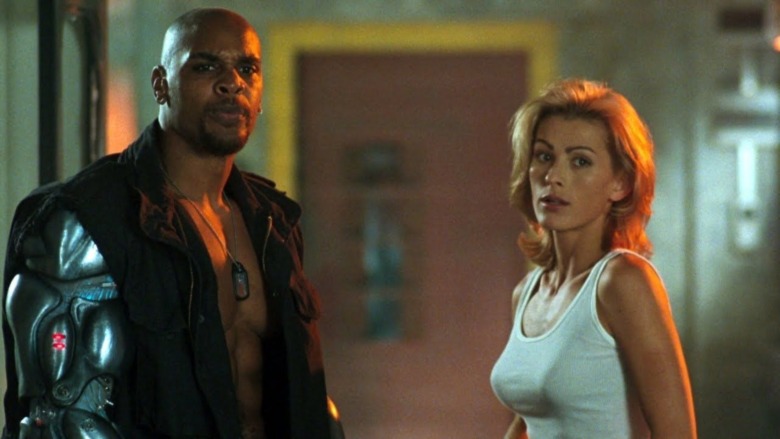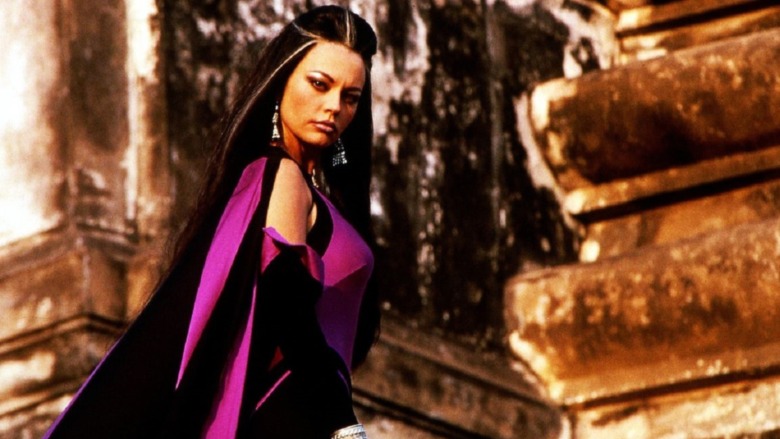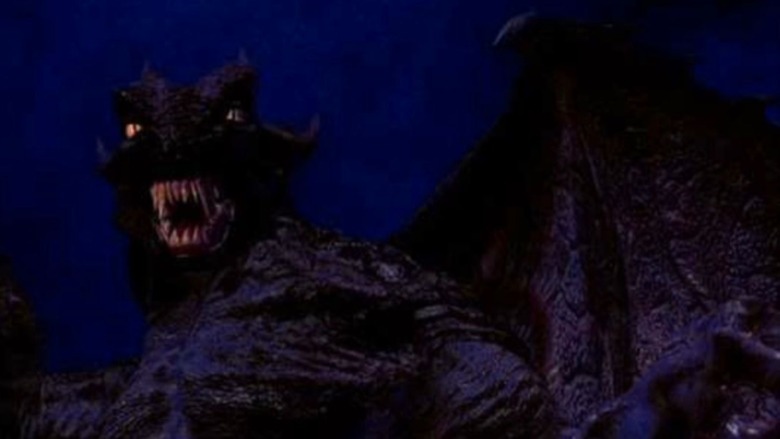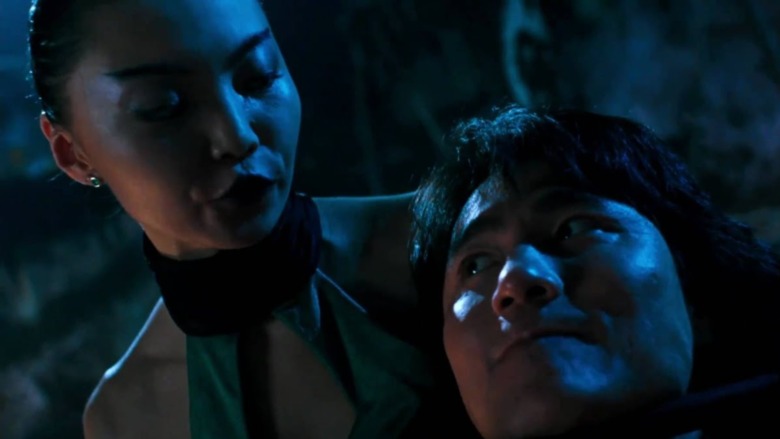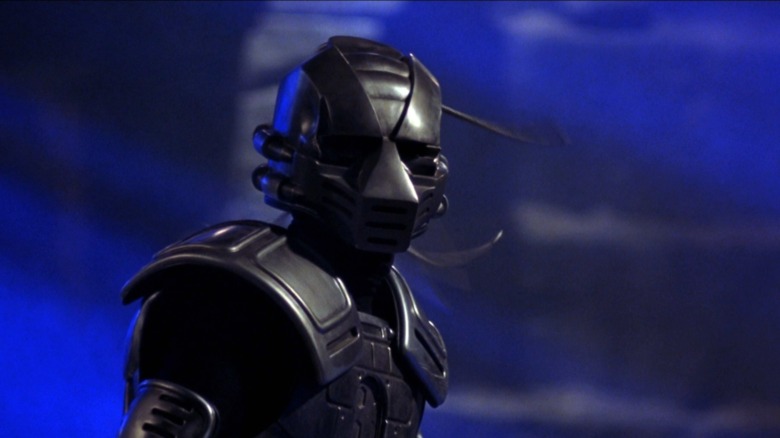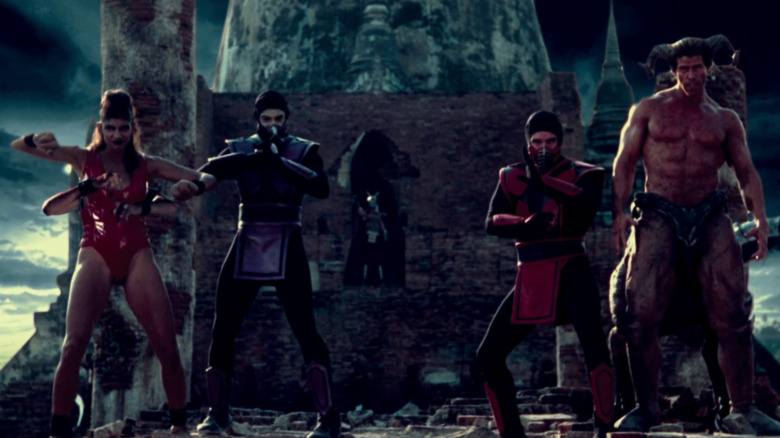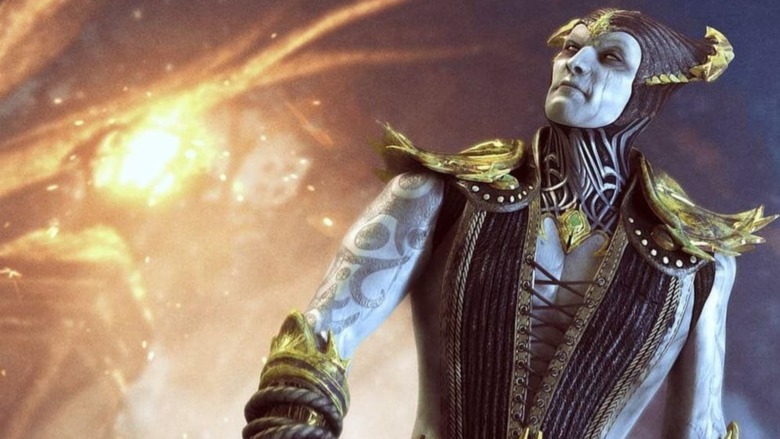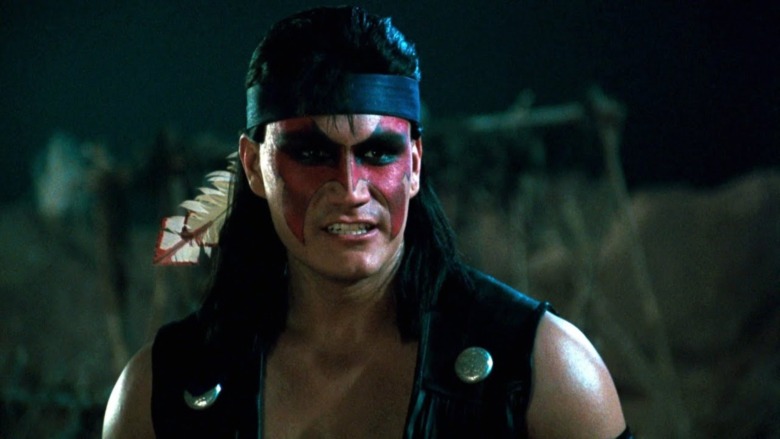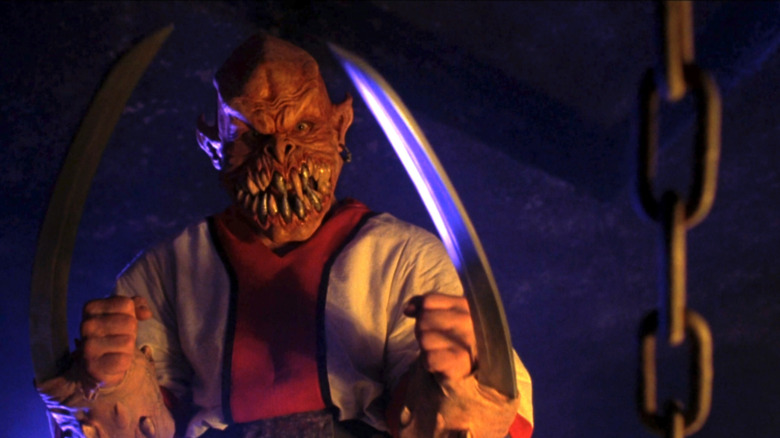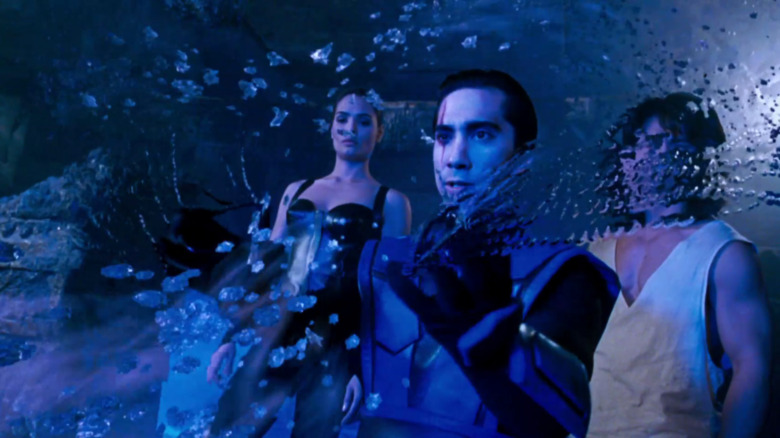Why Mortal Kombat: Annihilation Really Is That Bad
The 1995 "Mortal Kombat" film was a box office success, and is still considered to be one of the best video game movies made. Though the film may not have received the best critical reception, it generated a cult following and still entertains fans today. Looking to strike while the iron was hot from this flawless victory, another movie was quickly made. That rush sadly led to 1997's "Mortal Kombat: Annihilation," an unfortunate self-inflicted fatality.
Although it wasn't necessarily a box office failure, "Annihilation" cost almost double what the first outing did, and didn't produce nearly the same result. "Annihilation" was hated by critics. Worse, it let its fans down while trying to cater to them. Unlike its predecessor, the sequel is considered one of the worst films in the genre, and is even seen as one of the lowest points in the franchise's decade-spanning history by its own creators. The only good thing anyone has to say about "Annihilation" is that it has an exceptional techno soundtrack, but even then, there are few people who want to claim that this muscle-bound train wreck has any redeeming qualities. Here are some very good reasons not to perform a mercy for this film.
Recasting the kombatants
One of the more obvious issues with "Annihilation" is that its heroes look a bit different. The actors for Liu Kang (Robin Shou) and Kitana (Talisa Soto) are the only two familiar faces — Sonya Blade, Johnny Cage, and Raiden are played by new actors. There were different reasons why so many stars didn't return, but the consensus seemed to be that they all realized the script sucked, and felt their time was better spent elsewhere.
Most of the new kombatants try, but fall short in their roles. Even a skilled actor like James Remar, who takes the mantle of Raiden, can't hope to fill the shoes Christopher Lambert has left behind. The changes are incredibly distracting and the existing chemistry is lost. Plus, while fans attempt to adjust to the fresh faces, a slew of new characters are also introduced, making things even more jarring. Most of these actors are unknown, aside from Brian Thompson, who picks up the hammer of Shao Kahn, and Lynn "Red" Williams and Deron McBee, two American Gladiators who round out the muscle as Jax and Motaro respectively. Though the budget had been increased, many stuntmen still had to play multiple characters in the film — and most of them probably left this off their resumes.
Awful acting
It can be tough to turn video game exchanges into intriguing cinematic dialogue that doesn't sound ridiculous. Then, a film has to find actors who are able to deliver those words convincingly. Most people agree that both the lines and their delivery are wretched in "Annihilation."
Cool characters lose all credibility when trying to get words like "animality" across, and nothing makes an awesome moment more laughable than someone like Scorpion yelling "Suckers!" as he escapes — even if it does make for a memorable scene. Shao Kahn seems like he's laughing or just having trouble breathing in some scenes, Jax is given little to work with except stereotypical one-liners, Sindel's dramatic pauses are hilariously over-the-top, and Kitana is even more wooden than she is in the first film, offering less than zero emotion. Even the main star, Robin Shou, seems like he has completely checked out towards the end. This flaw isn't entirely on the performers, as their lines aren't great to start with, and the screenplay offers little time for characters to develop or build chemistry. But the end result is undeniably awful.
Dreadful presentation plagues the film
For most fans, the most devastating blow "Annihilation" lands is its lackluster presentation. The film makes the mistake of starting off with scenes from its better-shot and nicer-looking predecessor, then immediately puts its actors against one of the worst CGI skies imaginable. People are constantly clipping through parts of the green screen, and have odd lines around them that are horrible, easy to notice, and can't be unseen. Pausing on any one moment of "Annihilation" offers up a freeze-frame of god-awfulness and a playground for nitpicking. Most of these scenes enjoy the mercy of being in motion, where they don't look quite as bad. But scenes like the one in which Jax and Sonya jump away from an explosion, or the one featuring monsters that pop out of the statues and walls, are cringe-inducing. This isn't an issue of age, either: These things looked bad when the film was released. The final battle between two CGI creatures is notoriously offensive, somehow looking cheap despite the film's higher budget.
When there isn't reused or stock footage on screen, there are a couple of nice locales featured. But the film doesn't stay in any of them for long before going back to a soundstage full of continuity errors. The filmmakers were apparently unable to decide if they wanted Raiden's hair to be up or down in the first few minutes, lighting rigs are visible, and crew members can be seen in certain shots.
Plot holes and pointless kontent
For a movie that loves exposition dumps, "Annihilation" is quick to drop much of what it sets up and doesn't explain anything that doesn't lead into the next fight. Much of the franchise's best lore isn't touched on, and what is mentioned is barely explained. Many questions linger: What penalty does Liu Kang face for not finishing Nightwolf's three tests? Why are there three Reptiles, when Raiden only fights two? What's the point of Jade's infiltration? Why doesn't Sonya just explain what's going on to Jax on their long walk through the desert? Some of these questions arise due to edits and scenes left on the cutting room floor, but the scrip certainly doesn't help.
Raiden is front and center for most of these issues. He never explains why the Elder Gods lied to him, doesn't say much about why getting Kitana and Sindel back together is the key to stopping Shao Kahn, and preaches the need to do things together, then immediately splits the group up. The thunder god also gets a ridiculous new look that isn't explained and has little meaning. There is also the matter of the Velospheres, weird cage balls that the characters use to travel through the Earth. They're never brought up again, but stick out like a sore thumb.
Too much fanservice
The original "Mortal Kombat" movie takes elements from the first two games, but tells the story through characters who are learning about this new, mystical world. This allows viewers who know nothing about "Mortal Kombat" to be pulled easily into the film. "Annihilation," however, takes its ideas from "Mortal Kombat 3" without bothering to set up or explain hardly any of these new concepts and characters. It covers so many, in fact, that there's no focus.
In an attempt to appeal to the hardcore fans, tons of extra characters appear, more special moves from the games are used, the Elder Gods are shown, and bits of lore are dropped at random. At one point, Liu Kang mentions Edenia, a major realm in "Mortal Kombat" lore and Kitana's former home. But it isn't explained at all, other than him mentioning that she once told him about the temple. It's a reference that's easy for fans to miss, while anyone who isn't familiar isn't going to grasp its importance. Similarly, newbies won't understand why Sonya would mistake Mileena for Kitana, when she's in a different color and isn't using her trademark fans. There are tons of small details like that, which non-fans aren't given any reason to care about. All they do is clutter an already crowded movie.
Wasted potential everywhere
"Annihilation" throws in a number of heavy-hitting kombatants. Unfortunately, the movie is overstuffed, meaning that none of them are given any time to shine. Their presence isn't enjoyable for the fans, who realize just how much of a waste these cameos are. Jade may be the one exception, as she spends a lot of time in front of the camera after a great introduction ... but her plotline makes little sense, and Shao Kahn kills her via horrible CGI. Worse, the ugly digital monster burps after eating her, signifying how little respect "Annihilation" shows Jade. It's a shame, as she has a good backstory — much like Mileena, and her ties to Kitana as the princess' clone. But Mileena isn't even mentioned by name: She's relegated to a mud fight with Sonya, and is taken out with a simple kick to the head.
Rain is short-lived, but at least he gets to die twice in a weird editing choice. Ermac fights at the end, but the movie gives him Noob Saibot's abilities for some reason. The feisty Nightwolf is barely used, but at least he's portrayed by actual Native American rapper Gary "Litefoot" Davis. Kabal and Stryker are merely mentioned as "two of Earth's best warriors." Sheeva, who was supposed to have a more prominent role, dies like a chump, as it was too costly to keep animating her.
Shinnok, the fallen Elder God
"Annihilation" decided it needed another big bad, someone superior to Shao Kahn who helps him break the rules to take over Earthrealm. This adds an additional wrinkle into an already convoluted plot. The film names this rogue Elder God Shinnok, but compared to the Shinnok we see in the games, the name is one of the few things the two entities have in common. Shinnok, who appears as the villain in "Mortal Kombat Mythologies: Sub-Zero" and "Mortal Kombat 4," is a powerful foe from the Netherrealm who deserves his own turn as the main antagonist of a movie. "Annihilation" scenes including certain "Mortal Kombat 4" plot elements were left on the editing room floor, but it doesn't look like they would have added more to this take on the character, or altered his backstory to more closely resemble that of his video game counterpart.
As Shinnok, actor Reiner Schöne sports no makeup or costuming that resembles the character. Worse, the movie makes him Shao Kahn and Raiden's father. Yes, this film and the "Mortal Kombat vs. DC Universe" video game both try and pose the two characters as being related, confusing new fans. But "Annihilation" is more culpable for trying to make it an even bigger family affair, while stripping away Shinnok's most important traits and making him feel like an afterthought.
Animalities fail to catch on
"Mortal Kombat 3" introduced many new concepts to the franchise. One of the flashiest are the animalities, a new finishing move where the winner transforms into a glowing, colorful beast and kills their opponent. It doesn't tie into the story at all, or make sense for most of the characters, but it's still cool as a hidden oddity. So, of course, animalities were thrown into "Annihilation," which attempts to make them a big part of the ending.
It's hard to imagine that anyone really wanted to see a bad kaiju fight between a beefy dragon (that looks nothing like the one Liu Kang actually turns into within the games) and an awful-looking hydra in a martial arts film. But "Annihilation" goes and does it anyway. Furthermore, "animality" is also one of those awkward words that's hard to get people to take seriously. Nightwolf introduces the concept after transforming from a wolf into a human, and keeps repeating the term to try and make it stick. Whether the animalities were included to appease fans or because the filmmakers thought it would look impressive on the big screen, we'll never know. But what's certain is that they make the ending of an already ridiculous movie even more laughable, and should have stayed as a novelty of the games.
Quantity over quality fights
If absolutely nothing else, a movie like this should offer up quality fight scenes. The original film added in more action with reshoots, which turned out to include the movie's two best action scenes. So, the producers of "Annihilation" thought it best to slam the film with as many scuffles as they could.
Robin Shou acted as fight choreographer this time around, and while the action scenes aren't all bad, there's certainly something missing. There's an overuse of wirework in a large portion of the fight scenes, as well as many moves that don't connect and an absurd amount of flips. Gravity can only be ignored for so long before a fight starts to resemble a brawl at a bouncy castle. Many fans are also quick to point out how easy it is to notice some of the stuntmen in place of the actors. This is especially true with Raiden, as actor James Remar and his stand-in don't even have the same hair color.
This is all a tremendous shame, as a couple of the movie's fights have great moments, like seeing Scorpion versus Sub-Zero on the breaking ice bridge. The scenes are performed by talented professionals: The incredible Tony Jaa doubles for Liu Kang and others, while Darth Maul himself, Ray Park, helps bring Raiden to life. In fact, this exhibition actually got Park noticed by the "Star Wars" team. So hey, at least something good, other than the soundtrack, came out of the film.
Annihilation fatalitied the next film
After the success of the first film, producer Lawrence Kasanoff, CEO of Threshold Entertainment, wanted to fast-track other "Mortal Kombat" projects. This meant not waiting for director Paul W.S. Anderson to return, as he had decided to work on "Event Horizon" next, and promoting people in the crew who had stuck around to higher positions they weren't ready for. A third film was in works, one that Robin Shou was already contracted for. But "Annihilation's" lackluster box office and weak critical reception halted any momentum the series had, and meant that little to no progress was made for years.
The third film, supposedly titled "Mortal Kombat: Devastation," would allegedly have seen the return of some of the original cast. It was also rumored to be planning to ignore much of "Annihilation," opting to forget it like the bad dream it is. Anderson felt "Annihilation" was so bad, in fact, that he regretted not staying on – an experience most now credit to why he stayed with his "Resident Evil" films until their conclusion. The final nail in "Devastation's" coffin seemed to come in the form of Hurricane Katrina, when it destroyed what few sets had been constructed for the movie.
In going way too hard and messing up so much, "Annihilation" successfully delivered the fatal blow to any future live-action "Mortal Kombat" movies until 2021's reboot. It remains a huge black mark on the franchise.

